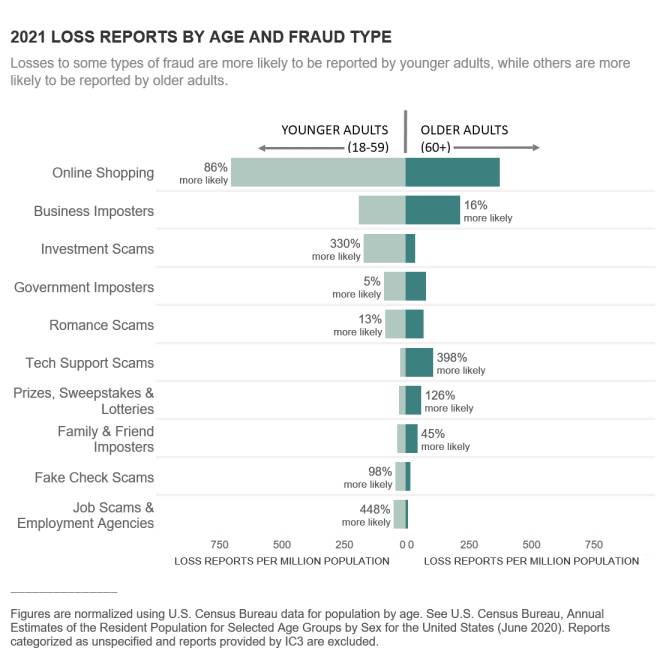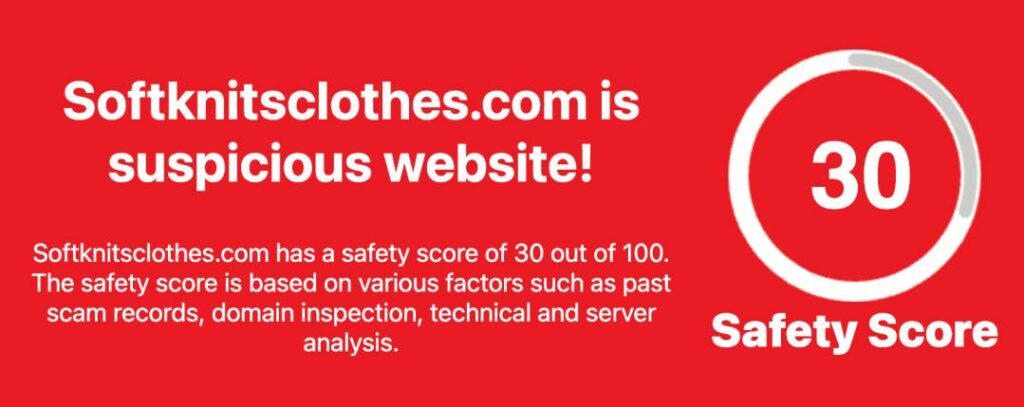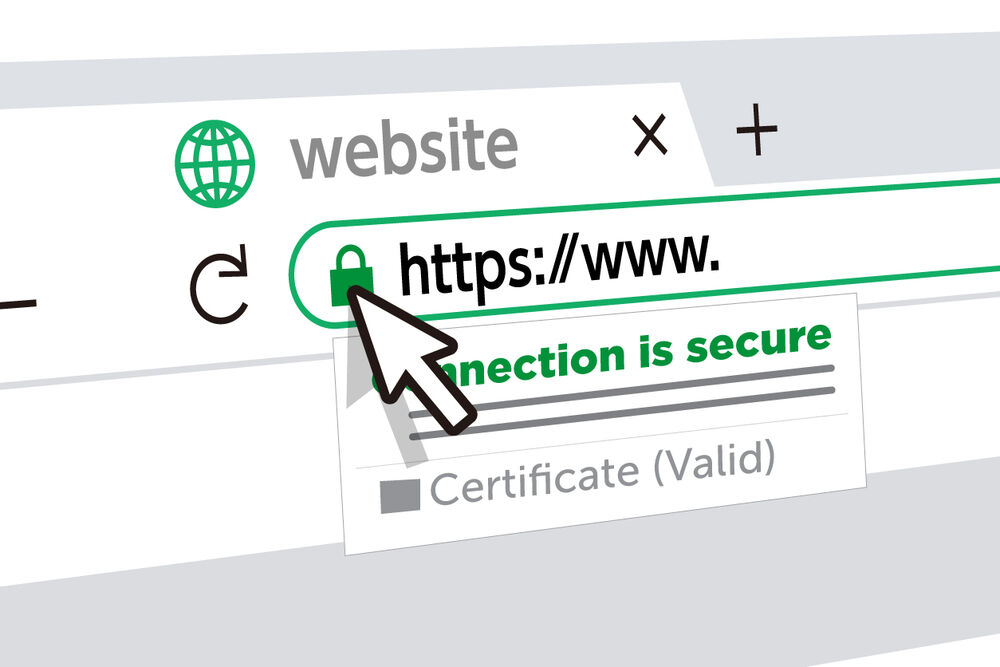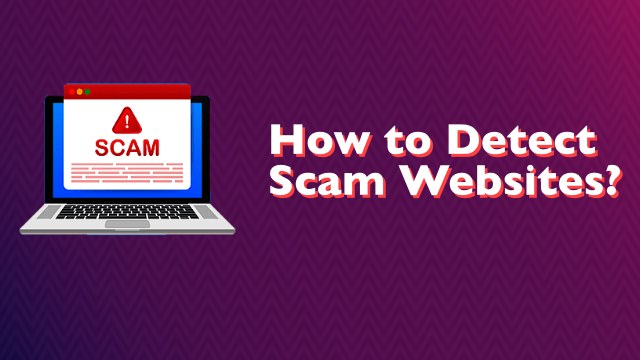Nowadays, there are a lot of scam websites available on the internet, which trick users and execute internet fraud in different ways.
Over the years, with the exponential growth of internet users, the number of scam websites has grown parallel.

FBI reveals that only Americans lost around $10.3 billion to internet scams in 2022. Not limited to that, but this figure is growing every year due to the inception of cryptocurrency and NFT as the least regulated investment opportunity.
But the main question is, How a common person can detect these scams..? and How to avoid scam websites?
Don’t worry, we are here to share with you a detailed guide to detect and prevent yourself from scam websites.
Jump To ⇢
How to Detect Scam Websites?
To detect any scam website, the most important thing is to check for red flags.
A person who understands these important red flags has very little chance of getting scammed.
Let us understand these red flags one by one.
1. Use a Scam Detection Tool
Using online free tools like Web Safety Checker is the easiest way to detect scam websites.

These tools check for various basic and technical aspects of each website to generate verdicts. With the integration of artificial intelligence, online scam detector tools became efficient.
Web Safety Checker like tools automatically scans several aspects, which is not possible manually.
2. Poorly Designed Websites and Grammar Errors
Scam websites often have poor design and layout. They may appear unprofessional, with low-quality images, inconsistent fonts, or a cluttered interface.
Additionally, scammers may not pay attention to grammar and spelling, resulting in numerous errors throughout the website.
Scammers nowadays got smarter and can build identical websites to others, hence be careful and follow the next red flag.
3. The Domain Name
Scammers often create domain names that are similar to legitimate websites to trick users into thinking they are on a genuine site.
Carefully examine the domain name for any misspellings, extra characters, or variations. For example, instead of “amazon.com,” a scam website might use “amaz0n.com” or “amazon-deals.com”.
Always double-check the domain name to ensure it matches the legitimate website you intend to visit.
Also be careful about domain extension, like Amazon use the “.com” extension for the USA and “.in” for India.
4. Search Reviews and Complaints
One of the most effective ways to detect online scam websites is to conduct thorough research.
Before making any transactions or sharing personal information, search for reviews or feedback about the website.
Look for reviews from other users on platform like TrustPilot.

Also, many public forums are there, which discuss popular scam websites.
Note: A single red flag can’t guarantee 100% accuracy in detecting scam websites. It’s important to use a combination of these key points and exercise caution.
5. Visit the Contact & About Page
Legitimate websites typically provide clear and easily accessible contact information, such as a physical address, phone number, and email address.
Scam websites may lack this information or provide vague or non-existent contact details. If you cannot find or see suspicious contact details then it is a warning sign.
6. Be Alert from Deals
Offering attractive deals is the most common way to attract people to a scam. Whether it’s a crypto-investment opportunity or a 90% off summer sale, be careful and take your foot back.
Fake e-commerce scammers often lure victims with too-good-to-be-true offers or deals. If a website is offering products or services at lower prices compared to other reputable websites, it could be a red flag.
If there is an online investment opportunity, check the approval from the financial regulator of your country.
7. Review Social Media Presence
Legitimate companies usually have an active social media presence. When visiting a website, look for social media icons or links to their social media profiles.
Some scam websites create dummy social media links on their website, so have a look at that also.
Also precisely check the operating location and from how many years they exist.
8. SSL Certificate
SSL Certificate can save you from disasters.
A website with valid SSL has “https” connection instead of “http”. This extra “s” encrypt your connection with the website.

A valid SSL certificate is vital when you are sharing sensitive information like passwords or credit card detail with any website.
Unfortunately, websites with a valid SSL certificate can steal your important information. In that case, tools like Web Safety Checker can detect blacklisted SSL certificates as well.

Want to know more about otto.o2o.com
Want know about crypto data currency
Yes I’m ready to no more about the scammers
I was having an issue with pop up warnings saying i had a virus, Trojan horse, i had been hacked, my data was stolen, dozens of them every day. If i clicked on one of the alerts they all sent me to ghostery.com but at the top of the page it said metabrastaxenis.com. If i went to metabrastaxenis on my own it would be blank. Ghostery said they have no affiliation with metabrastaxenis and they would be taking action. Thank you for verifying my suspicions about metabrastaxenis. It doesn’t matter where you go these days, someone is trying to put one over on you. Fake, deceptive pages are indeed everywhere≥
https://goodwillescrow.com/
This website is scammer. They don’t process as they describe and take my money ($435). They also have scam shipping website, vendors, and escrow working as a team. Please check and let people know about it. DON”T INVEST WITH THESE SCAMMERS.
I ordered a pink children bumper car from Frogamid on October 25, 2023 with a promise of delivery in the same week. However I still haven’t received it yet and I want to know how I can get a refund if this company turns out to be a scam?
Check with your credit card company as they may protect you.
https://www.deelolm.com/ take a look at website it’s a big scammer and is called john deer company he was scam alot of people in nigeria here, #3k is minimum invest and #800 minimum withdrawal, if you want to withdraw your money they will now tell you that you suposed to deposit #25k befor you can access for withdrawal which is not told befor……
Investment site advanced-earners.com is a scam, tell everyone
I was scam by this company called coagiva, they collected by 87000, still ask me to Pay more money before collecting my money, please i need help, how can I get my money back.
Can i relate to my bank, the place I use pay in the money.
Why did most of the online investments are scams
An yone can operate online investment plan through a website and they are not regulated.
Most of the online business are scam
Avoid ONELY.LTD, it’s a scam, looks legit but it’s definately not says you can earn money by doing tasks then you get a block and have to turn negative number in positive to do this they want your money in cryptocurrency. Please beware , I never added my bank details thankfully.
Lady operating the firm is SARA . Please be cautious
Pls i want to know if miningoracles a legit platform to invest
Because at first i was asked to rate busines location on google map 5 star and add good comment
Later on i was asked to invest 20.000 that same day i was refunded with 26k
But now i am asked to invest 50k this time around pls i need your advice do you think investing it is a good idea
Just want to know if the company is legit or scam thanks….
Please write down the website in full so we can check that compony
Auti mining. Com
Is scamm?
Nicheswap dolandırıcılık sitesidir. Paramı bana vermek için 1000$ istediler. Hesabımda para var. Hesabımdan alıp tahsil edin, dedim. Yapmadılar.Bana kripto para usdt trc20 hesabı vererek buraya göndermemi istediler. Bende niye hesabımdan almıyorsunuz. Hesabımdaki para değil mi dedim. Cevap vermediler. Nicheswap dolandırıcılık sitesidir. Paranızı alamazsınız.
Daha
Title: Report on Scam Company (https://techdefendershub.com/) and Scammer (Fazle Rabbi Khan)
Introduction:
This report is about a fraudulent activity encountered on Upwork, a global freelancing platform. An individual, posing as an employer, has been using accounts from different countries to send out job offers.
Problem:
The offer presented encountered technical issues which made it impossible to accept. Despite this, the individual insisted that I sign a Non-Disclosure Agreement (NDA). The individual claimed that the project was for his company. Based on the provided requirements, I developed the project. However, after the completion of the project, payment was not received. Instead, the individual introduced more issues and added further requirements.
Communication Issues:
Attempts to discuss the detailed requirements over a call were rebuffed by the individual, who claimed that the project was actually for a friend. When a request was made to speak directly with the friend for clarity, it was denied.
Misrepresentation of Identity:
The individual is using a Romanian Upwork account, but has disclosed that he is originally from Bangladesh. He also claimed that his company is located in the UK and his friend, for whom the project was supposedly intended, resides in Israel.
Conclusion:
As a result of these troubling and misleading practices, no payment has been received for the developed project. This deceptive activity raises serious concerns about the individual’s authenticity and integrity on the platform.
This is nice 👍 and I will always like to have more information about this things thank you
Pacminer is a scam
I want to know about CyroFX. Com I want know information about it, if is legit
Is Sinhotchoice a legal shop?
Great
I was scam by pacminer in Ghana including 850,000 Ghanaians were also scammed. Now they changed their name to Kbp.kbpminel.com please avoid investing with these scammers
Anyone can operate online investment plan through a website and they are not regulated. Most of them are fake
Mokodeals.com is it legit?
Ji nath CNC USB ch avanish Sunil l
I was been scammed by the platform omglike77.com please don’t invest in such platform are potential ponzi platform.
What about nebitexperts.com is it a legit or scammer company? It operates online investments in the field of cryptocurrency
Please I want to know if tradinghills.com is a scam because they told me to deposit 105$ before I start withdrawing please help me to check if they are legit or Scammers
Hzmtmall.com es una empresa estafadora ti inviertes dinero en es plataforma y después de tanto operaciones no puede recuperar tu dinero es una estafadores mi llevaron 8700 usdt ten cuidado ti llama una mujer de 29 años y ti enseña hacer las tareas y después ti llevan tu dinero .
Thanks very much to help us with this information about legit and scam companies. Because its so painful to be scammed by people who are successful in life.
IS fxgainmarket.company legit or scam?
Btckss. Com I forget key which thing should I do for withdrawal process
https://idreamunlimited.com/index/login This company is scamming organizations they have scam me 732 usdt through Binance that they will offer me job from home
Is “cashout block chain” scam or a legit website please let me know before I invest in it.